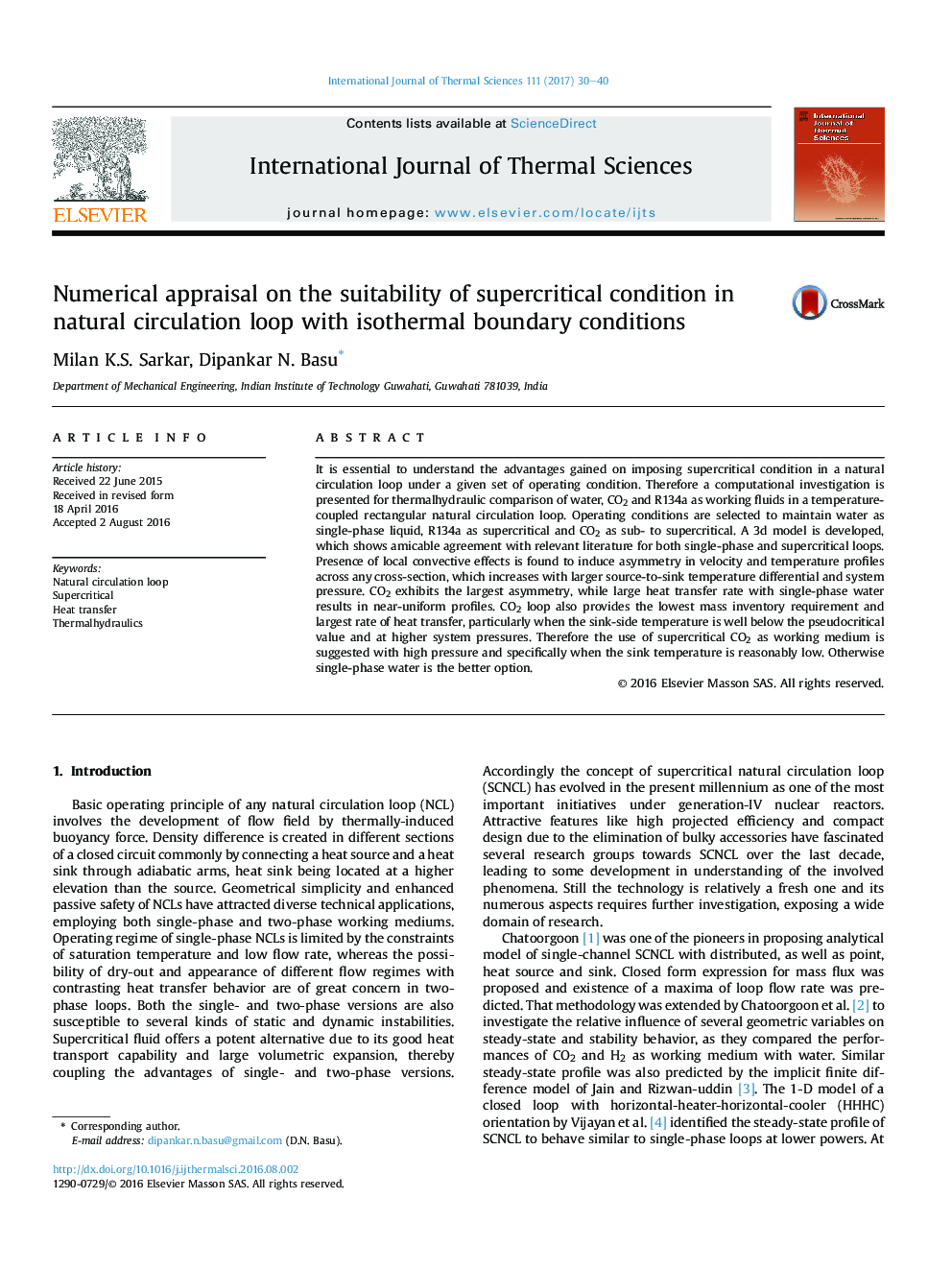| Article ID | Journal | Published Year | Pages | File Type |
|---|---|---|---|---|
| 667914 | International Journal of Thermal Sciences | 2017 | 11 Pages |
•Computational analyses to judge the suitability of using supercritical fluid in NCL.•Comparison of water, R134a & CO2 as loop fluid under identical operating conditions.•Asymmetric temperature & velocity profiles due to buoyancy-induced local convection.•Lowest mass inventory & largest heat transfer rate with CO2 under certain condition.•Supercritical CO2 is better option when sink temperature is below pseudocritical.
It is essential to understand the advantages gained on imposing supercritical condition in a natural circulation loop under a given set of operating condition. Therefore a computational investigation is presented for thermalhydraulic comparison of water, CO2 and R134a as working fluids in a temperature-coupled rectangular natural circulation loop. Operating conditions are selected to maintain water as single-phase liquid, R134a as supercritical and CO2 as sub- to supercritical. A 3d model is developed, which shows amicable agreement with relevant literature for both single-phase and supercritical loops. Presence of local convective effects is found to induce asymmetry in velocity and temperature profiles across any cross-section, which increases with larger source-to-sink temperature differential and system pressure. CO2 exhibits the largest asymmetry, while large heat transfer rate with single-phase water results in near-uniform profiles. CO2 loop also provides the lowest mass inventory requirement and largest rate of heat transfer, particularly when the sink-side temperature is well below the pseudocritical value and at higher system pressures. Therefore the use of supercritical CO2 as working medium is suggested with high pressure and specifically when the sink temperature is reasonably low. Otherwise single-phase water is the better option.
